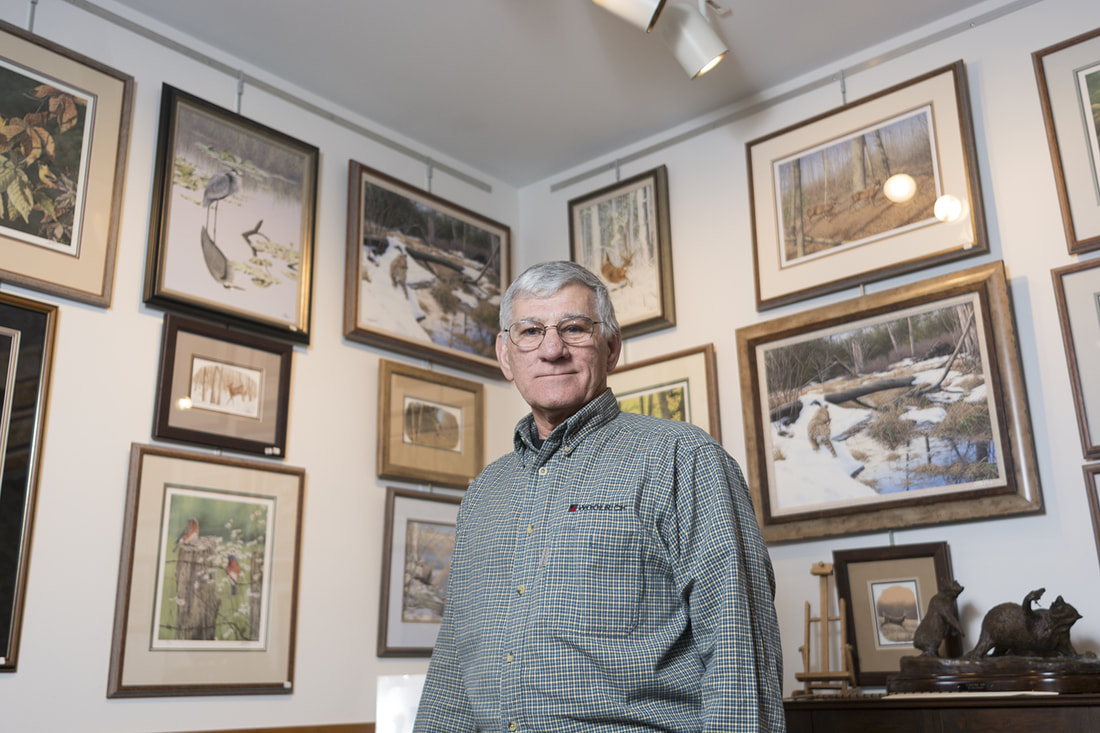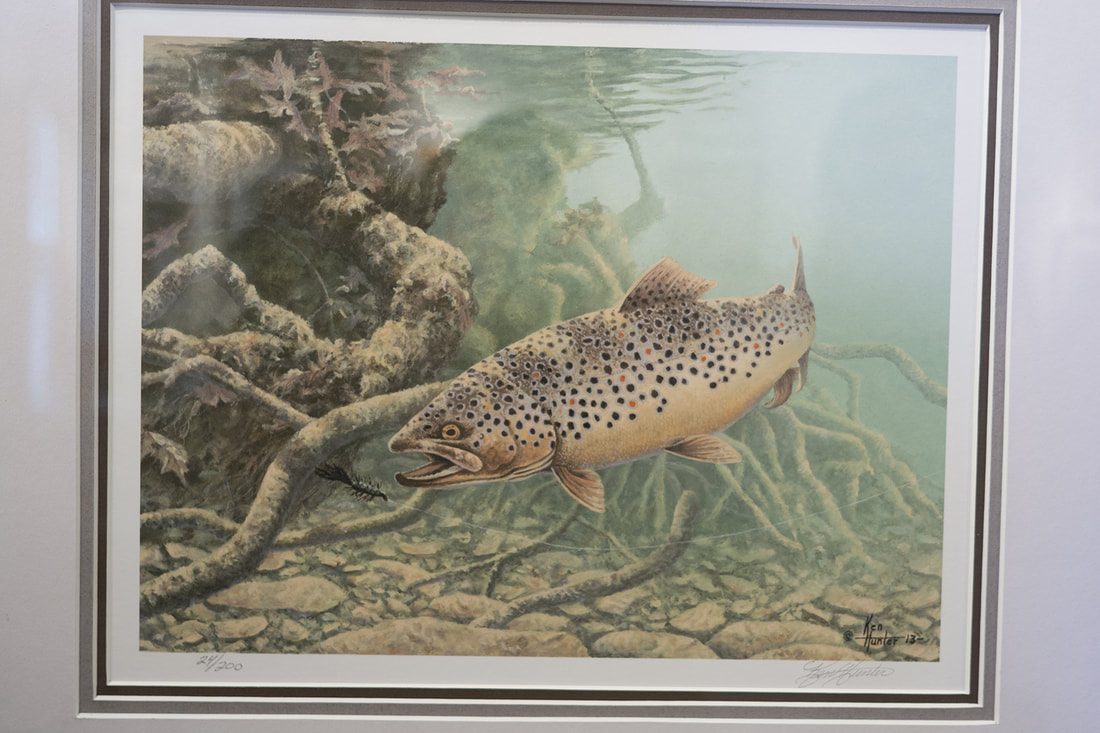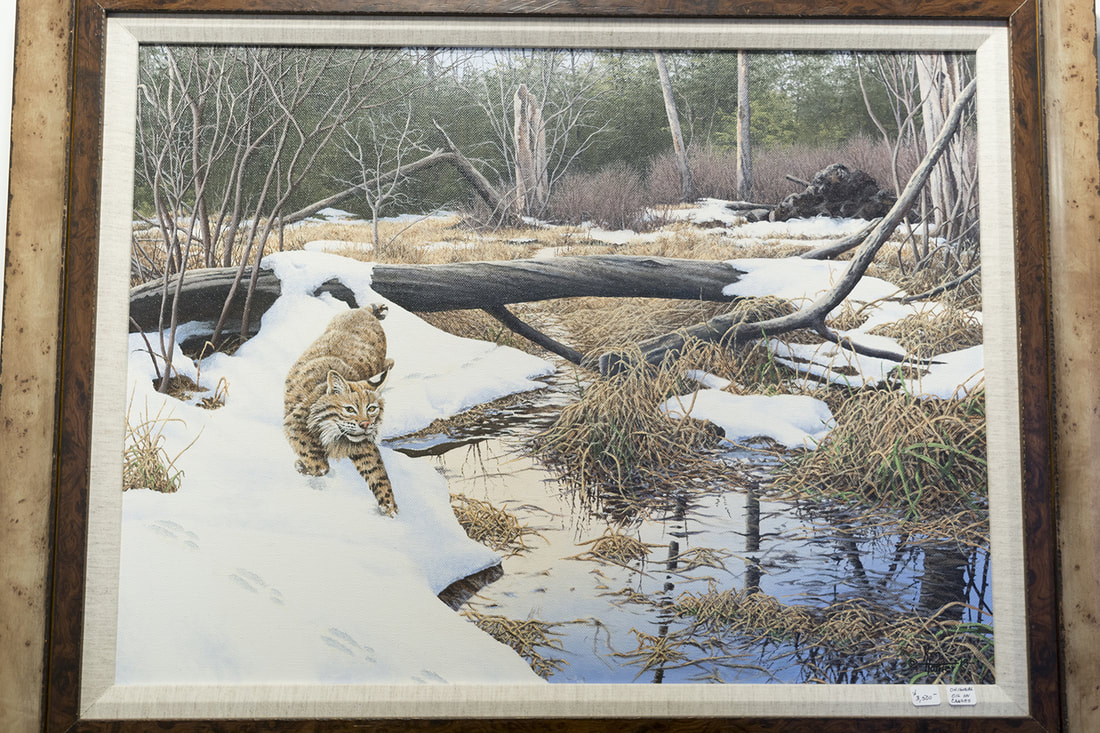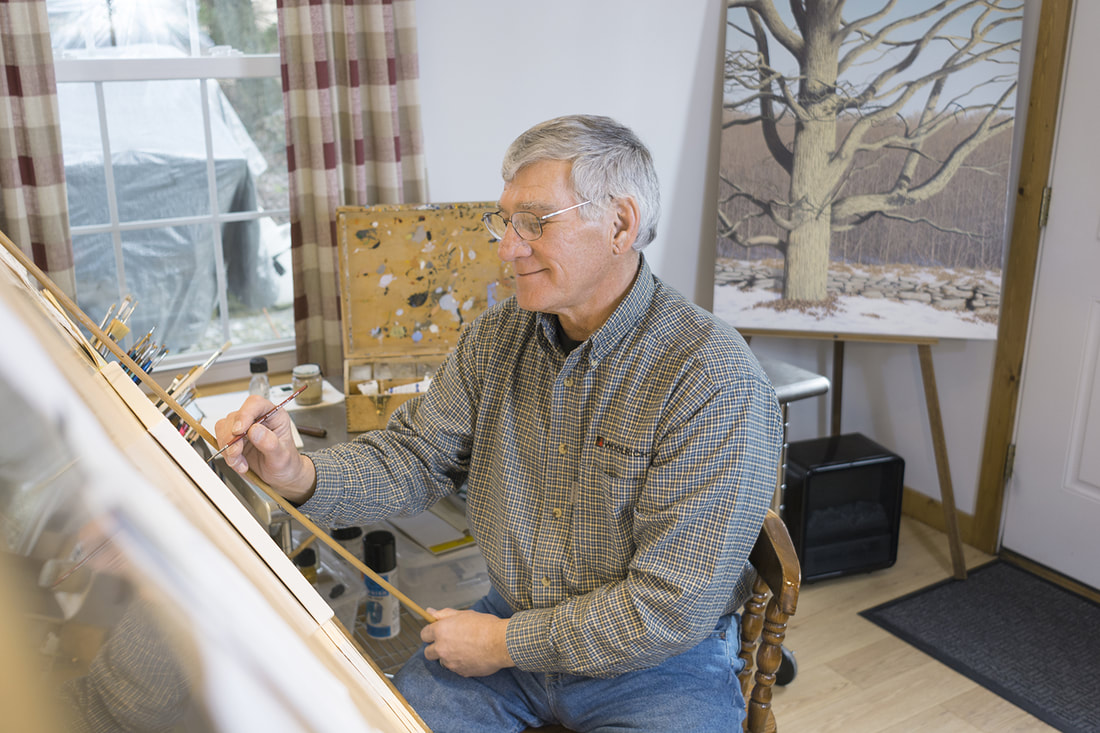|
Noting their son’s burgeoning interest in art, Ken Hunter’s parents purchased him a paint-by-numbers set. “I turned the box over and started sketching my own design,” he remembers. “I never did use the numbers side.” Inspired by his older brother’s wife, among others, Hunter continued to hone his craft every opportunity he could while growing up. “I remember driving down a country road with my parents in the fall and thinking, ‘Wow, this is so beautiful,’ and when we got home, I painted it,” he said. “It’s been that way since for me. I’ll be out taking a hike and see a hummingbird hovering over a flower, and think that would make a nice painting.” More than three decades ago, Hunter left his job as a teacher in the Warrior Run School District to focus full-time on his art career. “It is very satisfying to come into my own studio, and everyone always dreams about being their own boss and doing things on their own time, but the reality is that there are still obligations and deadlines,” he said. “Pennsylvania Game News (magazine) contacted me about designing their September cover, asking for something with two bull elk and two archery hunters in the background. With a project like that, you have to meet your deadlines.” Hunter has created hundreds of outdoors-based art pieces over the past 35 years, earning numerous accolades and receiving some high-profile opportunities. However, he admits that everyone can hone their skills as an artist — and that now, during an unprecedented time of quarantine, can be a great time to rediscover a passion for the arts. “God was good to me and blessed me with this talent, but even so, that doesn’t mean from a young age that I was a great artist. I made a lot of mistakes and did a lot of things wrong,” he said. “I learned by doing things over and over again, paying close attention to what I was trying to do.” Hunter has conducted numerous workshops for beginners, and offers the following tips to those who’d like to foster their art skills during the coronavirus shutdowns and restrictions. Learn your subject “Don’t go out and paint an antelope if you’ve never seen one,” he said. “Never paint a deer in great detail if you haven’t studied them closely, because hunters will see your mistakes.” Instead, Hunter recommends starting with the things you know best — the items, for example, in your own backyard. “Look closely at the trees, bushes and songbirds in your back yard — you get to know them pretty quick and you can learn ways to notice the details that are critical in doing a good job,” he said. “For example, take time to learn the differences between a sparrow and a black-capped chickadee. There are numerous resources to help you learn the differences — and then sit down and recreate a black-capped chickadee.” He suggests going where your subjects live — if you want to draw a raccoon, you should study them beforehand in their natural habitat. “That is why starting with the subjects in your own backyard is a great place to begin — you know the terrain and you see these features every day,” he said. “Even something like a butterfly resting on your tomato plant offers a great starting point for a piece.” Begin with the basics One of the main mantras of Hunter’s drawing lessons involved keeping it simple. “I would tell people to draw a tree, and they’d kind of laugh and then do it, and then I’d have them put that aside,” he said. “I’d then draw a lollipop — it is a tree drawing a third-grader would do — a straight line with a circle on top. Really, when it comes to art, we need to simplify things a bit — everything we draw boils down to a few simple shapes. Triangles, circles, elongated circles and even squares can be building blocks to most everything.” Hunter would then tweak his lollipop tree drawing with a few “squiggly” lines. “All I did was alter the lollipop some — slowing adding in details,” he said. “I’d take the pencil on its side and do some more squiggly lines and suddenly there were leaves. Many are amazed with that exercise and by the end of the session, they are drawing trees and showing lots of progress.” When Hunter draws an animal, he typically starts with circles. “For a bear, I’ll start with a circle for the chest and abdomen, elongated circles for the arms and legs, a circle for the head and nose. Then I’ll go back and add detail,” he said. “You start simple and then slowly work in the details you feel the most comfortable in adding.” Learn the color wheel
For those aspiring to be better painters, Hunter admits one of the most important tools is learning the aspects of a simple color wheel. “When I was a kid in school, the teacher brought out a color wheel, but I didn’t really pay attention to it, but later in life, I’ve realized how important that tool is,” he said. “When you want to get into painting — and painting well — you need to know how to mix colors properly, and that is learned through the color wheel.” He admits they can be found most anywhere — from old World Book Encyclopedias to online search engines. No such thing as perfection “It is good to remember that when making a piece of art, you aren’t creating something that the world will be critiquing and will be sold off to the highest bidder at an art auction,” he said. “It doesn’t have to be perfect. Mine aren’t perfect — every time I do a painting, I get better. I’m 73 years old and I’ve done hundreds of paintings. People will say I’ve arrived, but no, I haven’t. I still get better every time.” He recommends holding onto pieces you’ve done, and every so often, look back on them. “You’ll be amazed at how much you’ve improved,” he said. High-end equipment not needed Hunter admits that drawing only requires a few pencils and a tablet, and when tackling a painting, the supplies necessary can be kept simple. “You can put together an easel with stuff laying in your garage or buy a cheap one. If you decide to get into oil painting, you don’t need the most expensive types — they make little kits with basic colors, brushes, a palette knife to mix paints and a palette,” he said. “For like $30-40, you can have all the items you need to get started and do good work.” Do it for the right reasons Most people will never get to a point where they are consistently selling their pieces and able to sustain a lifestyle from it — and Hunter suggests that art should be done, first and foremost, for the love of the the medium. “I love what I do, and the subjects that I paint,” he said. “For some, painting is at best a hobby that helps break up the monotony of being home — especially during times like these — and that is totally fine.” Hunter admits that for him, one of the biggest benefits is seeing nature and the environment around him in a totally different light. “When you start painting trees, you start to see them differently — you appreciate them in a new way,” he said. “When looking at water, what do you see? Maybe you are just looking for fish, but when I start to paint water, it is a whole new ballgame. Do you see the reflection off the top or the bottom below? How many layers and levels and elements do you notice? You factor all of that into a painting by being observant and noticing details that you’d never really notice before.” He said the same holds true to most all paint subjects — even a butterfly resting on a plant. “You see more than just the butterfly — what species is it, does the coloration match the norm for that species or is there something different or unique,” he said. “On the plant, you hone in on the flower’s petals, what shade, can you see through them, how is the light and shadows impacting what you see? “Ultimately, being an outdoors artist gives you a completely better appreciation for details in our environment. You become a keen observer of what is around you.”
2 Comments
Dan Alters
4/22/2020 07:12:18 am
My wife and I have quite a few prints of Ken's work, but the two similar bluebird prints he did are our favorite.
Reply
Leave a Reply. |
AuthorsRiverkeeper John Zaktansky is an award-winning journalist and avid promoter of the outdoors who loves camping, kayaking, fishing and hunting with the family. Archives
July 2024
Topics |




 RSS Feed
RSS Feed